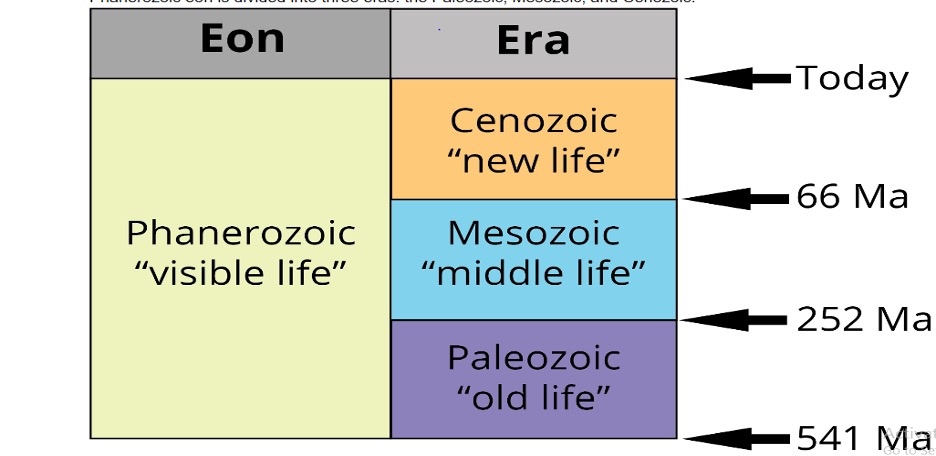Precambrian Time Geology Essay: Mnemonics, Tectonics, and Evolution
The Phanerozoic Eon is divided into:
- Cambrian,
- Ordovician,
- Silurian,
- Devonian,
- Mississippian,
- Pennsylvanian,
- Permian,
- Triassic,
- Jurassic,
- Cretaceous,
- Tertiary,
- Quaternary (Earle, 2019)
Statement
Can Old Senators Demand More Political Power Than Junior Congressmen? Tough Question!
Mnemonic Image

Figure 1 (Digital Atlas of Ancient Life, 2023)
Plate Tectonic Boundaries
Three types of plate tectonic boundaries include transformation, convergent, and divergent plate boundaries. Divergent boundaries occur when two tectonic plates move in opposite directions. Along these boundaries, magma and earthquakes are common. An example is the Mid-Atlantic Ridge.
Convergent plates are formed when two plates come together. The colliding plates can lead to one or both edges of the plates forming mountain ranges or deep seafloor trenches (Windley et al., 2021). Volcanos are common in these settings; an example is the pacific ring of fire.
A transform plate boundary is formed when two plates slide past each other. As the plates grind along, they usually pulverize rocks that line the boundary creating an undersea canyon or linear fault valley.
Mastering topics like tectonic boundaries, early continent formation, and mnemonics for Phanerozoic periods can be challenging for geology students. That’s where professional academic guidance makes a difference. Whether you’re preparing a detailed research paper or working through a geology assignment, our team provides expert geology homework helpline tailored to your needs. Strengthen your understanding of complex topics and improve your academic performance with personalized support designed for success.
Formation of continents during the Precambrian
The continents and the modern atmosphere were formed during the Precambrian known as the ‘Age of Early Life.’ The Hadean Eon started with the development of the earth’s first rocks ending four billion years ago. During this period, massive volcanic activity and frequent asteroid collisions led to constant changes on the earth’s surface (Earle, 2019). The Archean Eon is associated with forming the first continental crust, which began coalescing into huge land masses. Collisions decreased during this period from space objects and land masses. The first continents were particularly small due to the time taken for lighter accumulation into continental crust and for the continents to join. However, two supercontinents, including the Columbia and Rodinia, were formed during this period and are believed to have broken down before the Phanerozoic.
Fundamentals of Evolution
Four principles exist in evolution, selection, eco-evolutionary dynamics, connectivity, and variation. The principles are considered the primary mechanism of natural selection. A genetic and phenotypic variation usually determines how organisms interact with their environment and respond to section pressures. Selection is the engine that transforms variations into evolutionary changes (Simonet, 2021). Connectivity defines the movement of gametes and individuals across a landscape. Eco-evolutionary dynamics entails the impacts of evolution in feeding back influence to ecological changes.
References
Digital Atlas of Ancient Life (2023) Geological Time Scale. Paleontologycal Research Institution
Earle, S. (2019). 1.6 Geological Time. Physical Geology-2nd Edition.
Simonet, C. (2021). Evolutionary theory and human health.
Windley, B. F., Kusky, T., & Polat, A. (2021). Onset of plate tectonics by the Eoarchean. Precambrian Research, 352, 105980.

